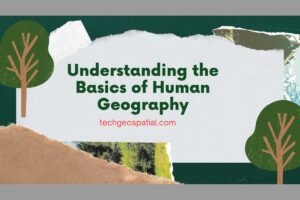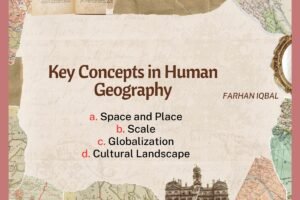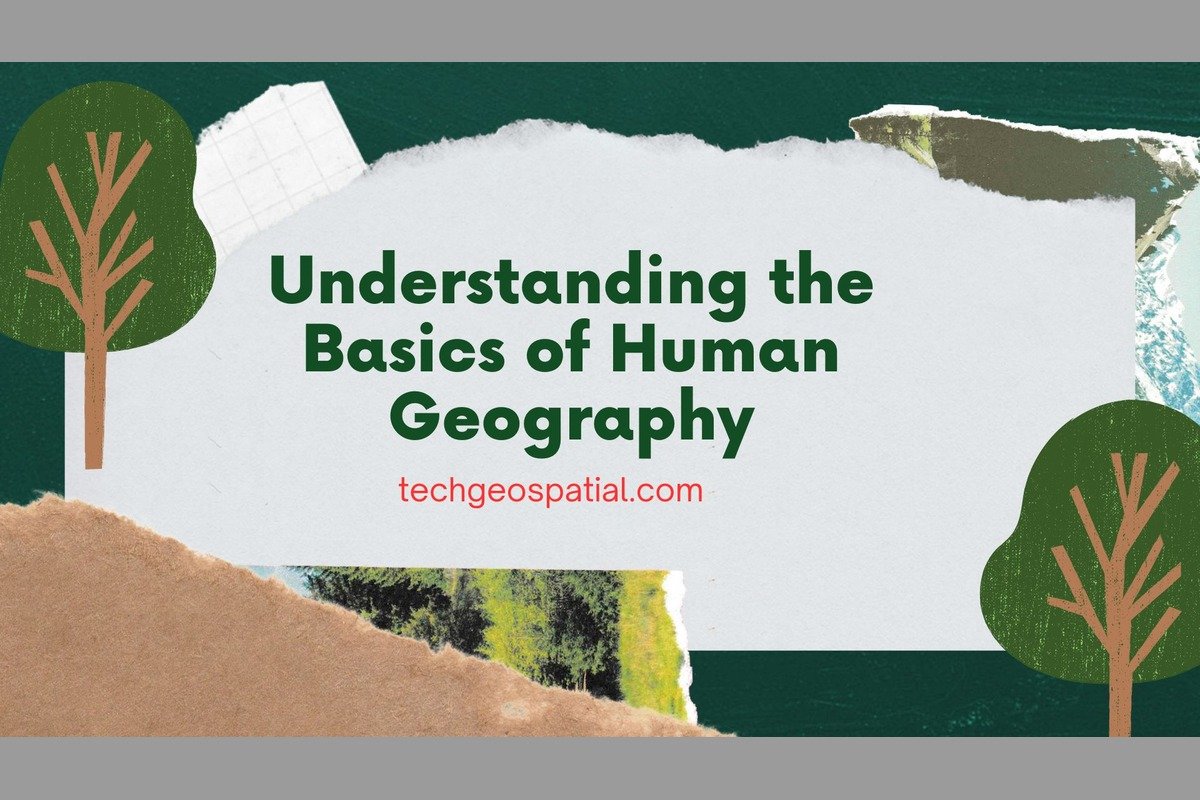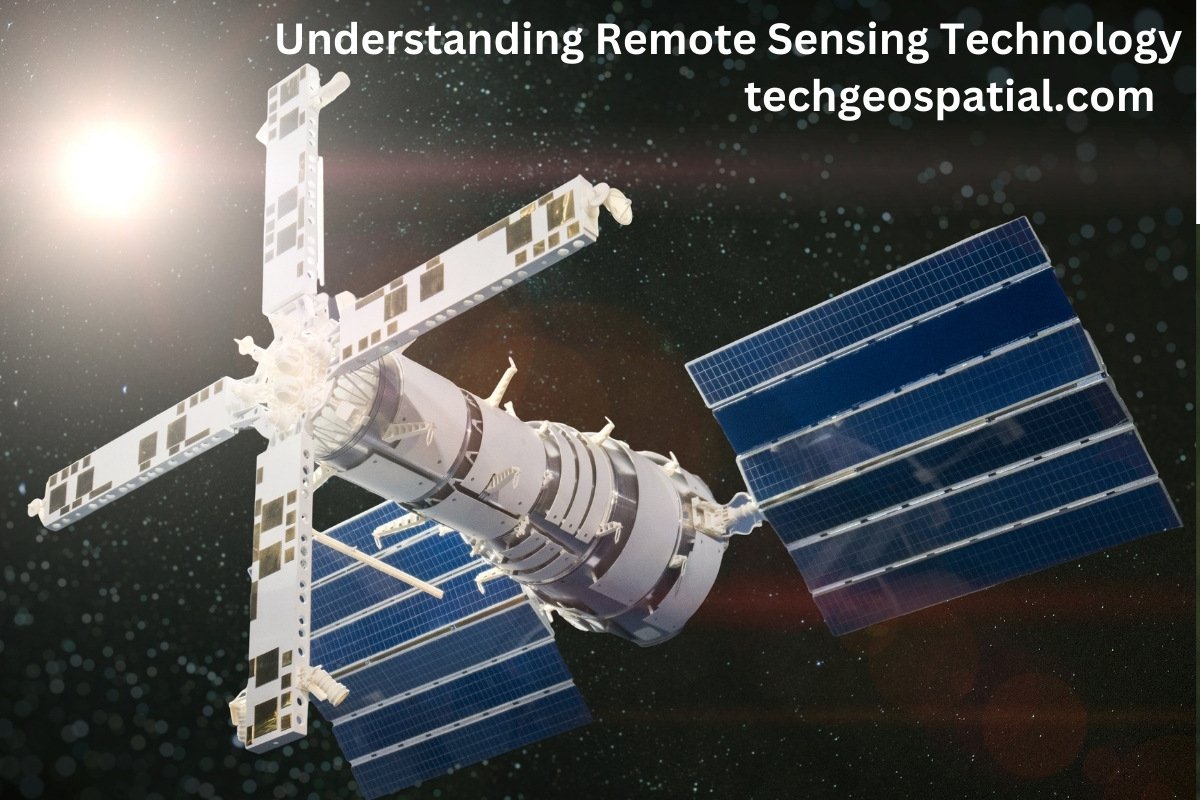Understanding the Basics of Human Geography

Human geography is a captivating field that explores the interaction between humans and their environment, encompassing a wide array of topics from population dynamics to cultural landscapes. In this article, we will delve into the fundamentals of human geography, its historical development, key themes, methodologies, and its relevance in today’s world.
1. Introduction to Human Geography
Defining Human Geography
Human geography is the study of human activities, their relationship with the environment, and how they vary spatially. It examines the patterns and processes shaping societies, cultures, economies, and landscapes.
Importance and Relevance
Understanding human geography is crucial for comprehending the complexities of our world. It provides insights into societal issues, informs policymaking, and aids in sustainable development initiatives.
2. Historical Development
Human geography has ancient roots, but it emerged as a distinct discipline during the 19th century. Pioneers such as Carl Ritter and Alexander von Humboldt laid the groundwork for the field’s development, emphasizing the importance of spatial analysis and regional studies.
3. Key Concepts in Human Geography

1. Space and Place:
- Space refers to the physical dimensions and locations where human activities occur, while place encompasses the unique characteristics and meanings attributed to specific locations by individuals or groups.
- Through the concept of space, human geographers analyze patterns of settlement, land use, and transportation networks, while the notion of place allows for the exploration of cultural identity, attachment, and sense of belonging.
2.Scale:
- Scale in human geography refers to the level of analysis, ranging from local to global. Geographers often examine phenomena at multiple scales to understand how they are interconnected and influenced by broader geographic contexts.
- For example, studying urbanization at the local scale involves analyzing the growth and development of cities, while examining it at the global scale involves investigating the underlying economic, social, and political processes driving urbanization trends worldwide.
3. Globalization:
- Globalization is a central theme in contemporary human geography, reflecting the increasing interconnectedness and interdependence of societies across the globe.
- Human geographers explore the spatial dimensions of globalization, including the flows of goods, capital, information, and people, as well as the uneven distribution of power and resources in the global economy.
4. Cultural Landscape:
- The cultural landscape refers to the visible manifestations of human activity on the Earth’s surface, including built environments, agricultural landscapes, and symbolic landmarks.
- By analyzing cultural landscapes, human geographers uncover the ways in which societies shape and are shaped by their environments, as well as the meanings and values embedded in the landscapes they inhabit.
- Theories and Approaches in Human Geography:
3. Theories and Approaches in Human Geography:
1. Environmental Determinism vs. Possibilism:

- Environmental determinism posits that human societies are largely shaped by their physical environments, with climate, terrain, and resources exerting significant influence on cultural development and societal organization.
- In contrast, possibilism argues that while the environment provides constraints and opportunities, human societies have the capacity to adapt and transform their surroundings through technological innovation, social organization, and cultural practices.
2. Spatial Analysis:
- Spatial analysis involves the use of geographic information systems (GIS), remote sensing, and other spatial techniques to analyze and visualize spatial patterns, relationships, and processes.
- By applying spatial analysis tools, human geographers can identify spatial disparities, predict future trends, and inform decision-making in areas such as urban planning, resource management, and disaster risk reduction.
3. Structuralism vs. Humanism:
- Structuralism emphasizes the role of broader social structures, such as economic systems, political institutions, and cultural norms, in shaping human behavior and spatial patterns.
- Humanism, on the other hand, focuses on the agency of individuals and communities in shaping their environments and identities, highlighting the subjective experiences and meanings attached to places.
5. Methodologies in Human Geography:
1. Qualitative Research:
- Qualitative research methods, such as interviews, participant observation, and archival research, are commonly used in human geography to explore the subjective experiences, perceptions, and meanings associated with places and spaces.
- Qualitative approaches allow researchers to capture the complexities and nuances of human behavior and social interactions, providing rich insights into cultural landscapes and everyday life.
2. Quantitative Research:
- Quantitative research methods, including surveys, statistical analysis, and spatial modeling, are employed to examine spatial patterns, relationships, and trends using numerical data.
- Quantitative approaches enable researchers to identify correlations, test hypotheses, and make generalizations about spatial phenomena, particularly in areas such as population geography, economic geography, and spatial epidemiology.
6. Tools and Methods
Human geographers employ various tools and methodologies to analyze spatial patterns and processes. These include quantitative methods such as statistical analysis and surveys, qualitative approaches like interviews and ethnography, and Geographic Information Systems (GIS) for spatial mapping and analysis.
Population and Migration
Population growth, distribution, and migration are key topics in human geography. Demographic trends impact resource management, urbanization, and social cohesion, making them essential areas of study.
Cultural Geography
Cultural geography examines how human cultures shape and are shaped by their environments. It explores the spatial distribution of languages, religions, traditions, and symbols, illustrating the diverse ways in which humans interact with their surroundings.
Economic Geography
Economic geography studies the spatial organization of economic activities, including production, distribution, and consumption. It analyzes factors such as resources, infrastructure, and policies that influence economic development and globalization.
Political Geography
Political geography explores the spatial dimensions of politics and governance. It examines borders, territories, and power relationships between states, as well as geopolitical issues such as conflicts, alliances, and diplomacy.
Urban Geography
Urban geography focuses on the spatial patterns and processes of urbanization. It examines the growth and development of cities, including issues such as land use, transportation, housing, and social inequalities.
Environmental Geography
Environmental geography studies the interactions between humans and the natural environment. It explores issues such as climate change, resource management, pollution, and sustainability, highlighting the complex relationship between society and nature.
Regional Geography
Regional geography analyzes specific geographic regions, examining their physical, cultural, economic, and political characteristics. It provides insights into regional disparities, identities, and development pathways.
7. Applications of Human Geography
Human geography has practical applications in various fields, including urban planning, environmental management, and policymaking. By understanding spatial patterns and processes, policymakers can make informed decisions to address societal challenges and promote sustainable development.
Challenges and Debates
Human geography faces challenges and debates, including the tensions between globalization and localization, and the complexities of achieving environmental sustainability. These issues require interdisciplinary approaches and innovative solutions.
Future Directions
The future of human geography lies in addressing emerging challenges such as climate change, urbanization, and globalization. By integrating new technologies and methodologies, human geographers can continue to advance our understanding of the complex relationships between humans and their environment.
Conclusion
In conclusion, human geography provides valuable insights into the spatial dynamics of human societies, cultures, economies, and environments. By studying the interactions between humans and their surroundings, we can better understand the complexities of our world and work towards creating more sustainable and equitable societies.
Unique FAQs
What career opportunities are available for human geography graduates?
-
- Human geography graduates can pursue careers in urban planning, environmental management, international development, market research, and government agencies.
2. How does human geography differ from physical geography?
-
- While physical geography focuses on the natural environment, human geography examines the relationship between humans and their surroundings, including social, cultural, economic, and political aspects.
3. What role does technology play in modern human geography research?
-
- Technology, such as Geographic Information Systems (GIS), remote sensing, and spatial analysis software, has revolutionized human geography research by enabling the collection, analysis, and visualization of spatial data.
4. How does human geography contribute to sustainable development?
-
- Human geography provides insights into the social, economic, and environmental factors influencing sustainable development. By understanding these complexities, policymakers can implement strategies to promote long-term sustainability.
5. What are some emerging trends in the field of human geography?
-
- Emerging trends in human geography include the study of digital geographies, social media, urban informatics, and the impacts of globalization on local communities.






good